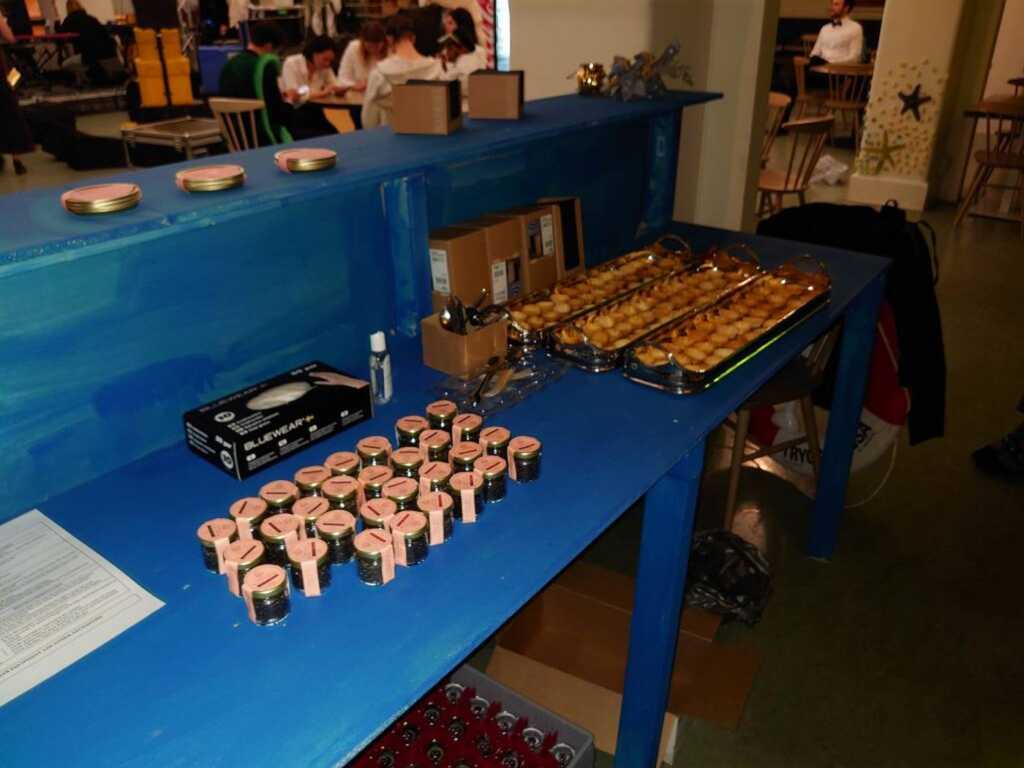Caviar is one of Sweden’s top products; and, when it comes to this sought-after delicacy, Arctic Roe of Scandinavia is a pioneering producer. The company is changing the game in the world of gourmet delicacies with its commitment to sustainability, quality, and innovation — this ethos sets the brand apart from traditional caviar producers.
Caviar is one of Sweden’s top products; and, when it comes to this sought-after delicacy, Arctic Roe of Scandinavia is a pioneering producer.
This exclusive interview with Torbjorn Ranta, Managing Director of Arctic Roe of Scandinavia, explores the unique factors that make their product stand out, such as the brand’s groundbreaking live-method farming approach, which not only ensures the continuity of caviar production but also minimizes its impact on the environment. Water quality management likewise plays a pivotal role in shaping the overall quality of Arctic Roe’s caviar. The company is dedicated to using purified well water and re-circulating it; this demonstrates their commitment to both the consistency of their product quality and to their environmental responsibility.
Furthermore, the interview explores the distinct flavor profiles of the brand’s Siberian sturgeon species and the meticulous processes they employ to maintain and enhance these flavors.
Finally, the interview looks into the exciting prospects and challenges of exporting Arctic Roe’s caviar to the discerning Japanese market. From adjusting salinity levels to optimizing logistics and adapting to local preferences, Arctic Roe’s journey into Japan promises to be an intriguing venture, with a number of key milestones guiding their approach.
Unique selling propositions
Could you highlight the key factors that set Arctic Roe of Scandinavia’s caviar apart from other products in the market? What unique qualities or processes contribute to the distinctiveness of your caviar?
We are live-method producers of caviar, which means that the caviar is milked from the sturgeon females approximately every 24 months. A female is estimated to give five harvests over a 10-year period. When sourcing caviar from slaughtered fish, which is the traditional way, each fish only yields one harvest in its lifetime. Live-method farming is a much more sustainable method; a method for the future.



The majority of sturgeon farmers in the world engage in traditional farming in open water, such as in rivers or lakes. In Sweden, Arctic Roe is not allowed to be out in the nearby river. We keep our fish inside, in a recirculation aqua plant (RAS), which likewise prevents fish waste and nitrogen from being emitted into nature. The absence of emissions results in environmentally-friendlier method of farming.
Further, Arctic Roe employs the “single-fish” method of production. We do not mix caviar grains from different fish, as this practice produces a variance in taste properties.


Also, since a live-method farmer has fewer fish to keep track of, Arctic Roe inserts a chip on each fish and tracks the females, over their life spans. Thereby each fish is assigned a name; and on each caviar tin, the name of the producing female, as well as the production day, show up on the backside sticker. This is not possible, when using the slaughter method.
Distinct flavor profiles
Each of the five Siberian sturgeon species you breed is known to possess unique flavor profiles. Could you delve into the flavor characteristics of these species and how you maintain and enhance these distinct flavors during the production process?
We breed one species, Siberian sturgeon. There are 27 different sturgeon species in nature. The most common ones when it comes to caviar production are the Siberian sturgeon and the Russian sturgeon. Arctic Roe, as mentioned, concentrates on Siberian sturgeon.
From the Siberian sturgeon roe, we produce three different product varieties. They differ a little bit when it comes to properties, but we are equally proud of them all.
Caviar taste properties depend on many factors, such as water quality, feed, and capturing the roe grains at the right moment. The last factor involves the use of ultrasonic scanners, the same as in maternity hospitals. Our fish specialist scans each fish in our farm, and there are more than 2,000 females, at least every 6th month. Otherwise, the fish roe may be overly-mature or premature; in these scenarios, we thereby do not get any caviar at all, or we get roe of a less superior quality. Scanning the fish on time is, therefore, a key factor.
During the production process, it is vital to synchronize the milking of the roe with the preparation of the roe to caviar in the food section. There are many details and routines that need to be carefully monitored during the caviar preparation process. Each of these details and routines plays a vital role in determining the result of the product.
During the preparation process, salt is added to the caviar in the range of 3.3% – 3.7%. The salt facilitates the development of the flavors. The maturation process takes a few weeks, at least 2 weeks, but the taste properties further improve and stabilize after a few more weeks. Caviar needs to be stored under refrigerated conditions.
Caviar taste properties depend on many factors, such as water quality, feed, and capturing the roe grains at the right moment.
Torbjorn Ranta, Managing Director of Arctic Roe of Scandinavia
Meticulous water quality management
The quality of caviar is closely tied to the environment in which the sturgeon fish are raised. Could you elaborate on the water quality management practices you employ at your farms? How do these practices directly impact the final quality of your caviar?
Water quality is one key factor. In a sturgeon farm that keeps their fish in open water, in cages in a river, water properties have seasonal variations. You have the different climates and seasons, which affect water flow and temperature, which will all result in big variations. This is a challenge for an outdoor farmer. An RAS-farmer, such as Arctic Roe, works with water from water wells. In our case, we have two deep wells supplying water with the same inherent properties, all year around. This is a positive factor that enables us to produce caviar with a stable, consistent quality, all year around. When the well water reaches our farm, we purify it continuously in our various water filters. An RAS-farm typically re-circulates more than 90% — in our case, we re-circulate more than 99% — of the daily water used. This is another positive, environmentally-friendly factor. Water is a scarce resource, and we optimize water usage.



Expansion into international markets
Expanding into international markets is often both challenging and rewarding. What challenges and opportunities do you foresee in exporting your caviar to Japan? Are there any specific strategies or adaptations you plan to implement to cater to the Japanese market’s preferences and regulations?
One challenge is taste properties. Europeans, and particularly Scandinavians, are used to a high salinity in the local food. We therefore use a salt content of 3.7% in our domestic market. When we tested the Japanese preferences, it showed that Japanese consumers prefer much lower salinity; in this case, around 3.3%. Also, when it comes to the texture of the caviar grains, preferences differ between the continents. So, in the case of Arctic Roe, it is a challenge to produce caviar with specifications other than those that are characteristic of the domestic market. However, we have advisors, and we are now preparing a “Japanese Edition” of our Swedish Black Caviar.



A further challenge is in the field of logistics. In our home market, our clients, the restaurants, have a stable caviar turnover. A typical client orders caviar every 2nd or 3rd week and receives the delivery within a few days. Expiration or refrigerated shelf life of the product is not an issue, as it is typically consumed right away. And transport costs are not an issue, either. When exporting to Asia or to the US, the transport cost is of big importance. We cannot afford to send small quantities in single containers. We must, therefore, work out the logistics with our buyers, so that we send enough caviar in one shipment to secure reasonable transport costs. On the other hand, then, the duration or freshness life of the product is critical. The distributor must be certain that they are able to sell the product, in time, to their local consumers.
Roadmap to the Japanese market
Export timelines can play a pivotal role in market expansion. Could you provide insights into your company’s roadmap for entering the Japanese market? What are the key milestones and considerations that will guide your approach to successfully introducing Arctic Roe’s caviar to Japanese consumers?
We have a local partner, as well as Japanese export/import advisors. We know that it takes a long time to establish a new brand in a new market. We have, ourselves, gone through that in our domestic market, since we started from scratch a few years ago. It took us some three years of market presence in Sweden to secure 10% of the total domestic market. We aim at doubling from there, to 20%, in the next few years. It also takes a lot of work and effort. We do not believe it will be any easier in the export markets. Each destination has its prerequisites. Therefore, we have a very long-term view of our efforts in Japan. We prefer to take it slowly and gradually, so that we carefully analyze and consider all critical factors — such as logistics, marketing, taste properties, etcetera — before launching. We therefore have no particular time plan set in stone, just yet.




We also understand that the so called “environmental concerns” and “sustainability trend” probably are more pronounced in Scandinavia than in the rest of Europe, Asia, and the Americas. We therefore let time work for us. Taking Volvo cars as an example, in the 60’s and 70’s the company focused on car safety to get a foothold in the market; we want to focus on sustainability. We produce our caviar from fish that are housed in an abandoned and converted paper mill in Småland. Of course, this comes with higher production costs than any caviar being produced from slaughtered fish in a river somewhere. These are all factors that we know people will come to appreciate. We are firm believers and have high hopes that global consumers will come to understand that the live-method process of producing caviar, while costlier, is much more sustainable and environmentally friendlier than its counterparts. And, as a result, there are benefits to animal welfare. At that point in time, when that realization takes place, we also believe that Japanese caviar consumers will give priority to live-method-sourced caviar — and, hopefully to our Swedish Black Caviar.






